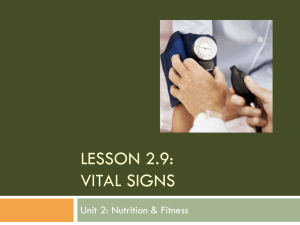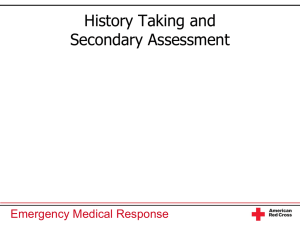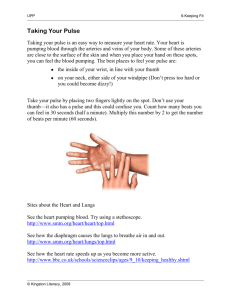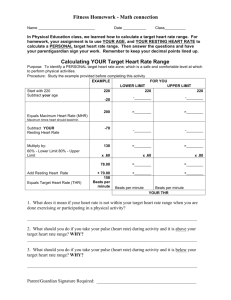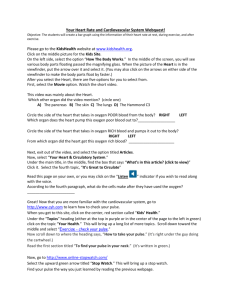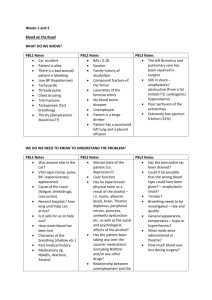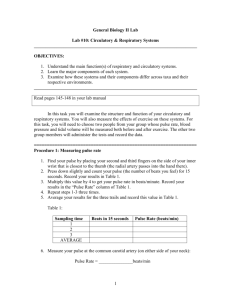Child Breathing & Heart Rate Guide | When to Seek Help
advertisement
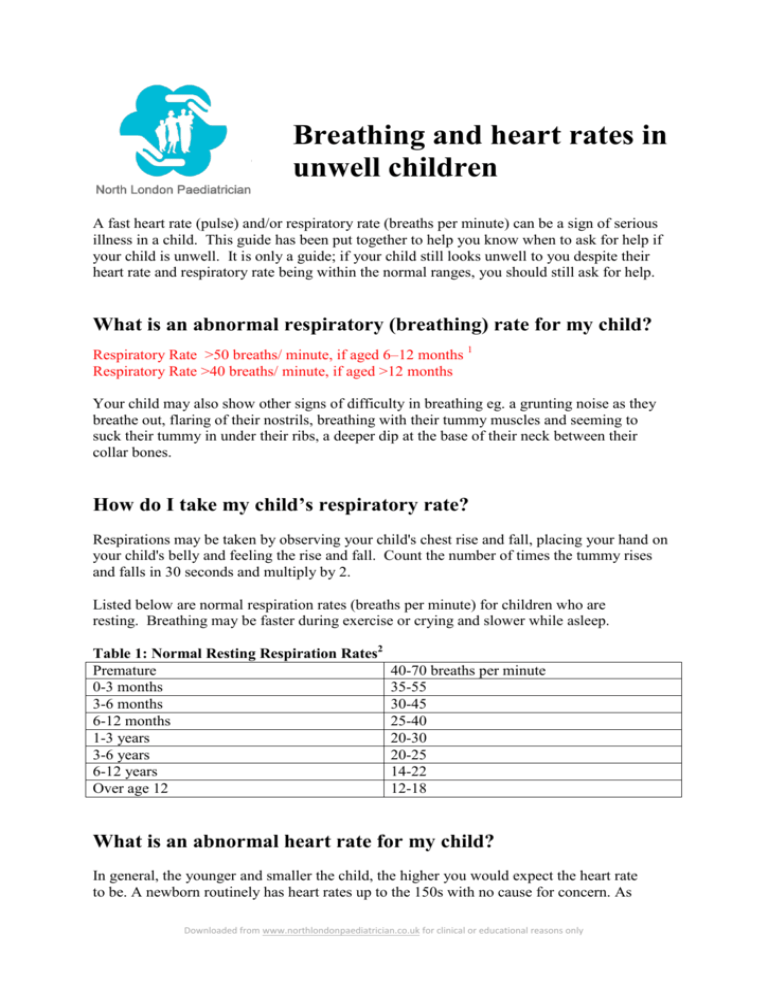
Breathing and heart rates in unwell children A fast heart rate (pulse) and/or respiratory rate (breaths per minute) can be a sign of serious illness in a child. This guide has been put together to help you know when to ask for help if your child is unwell. It is only a guide; if your child still looks unwell to you despite their heart rate and respiratory rate being within the normal ranges, you should still ask for help. What is an abnormal respiratory (breathing) rate for my child? Respiratory Rate >50 breaths/ minute, if aged 6–12 months 1 Respiratory Rate >40 breaths/ minute, if aged >12 months Your child may also show other signs of difficulty in breathing eg. a grunting noise as they breathe out, flaring of their nostrils, breathing with their tummy muscles and seeming to suck their tummy in under their ribs, a deeper dip at the base of their neck between their collar bones. How do I take my child’s respiratory rate? Respirations may be taken by observing your child's chest rise and fall, placing your hand on your child's belly and feeling the rise and fall. Count the number of times the tummy rises and falls in 30 seconds and multiply by 2. Listed below are normal respiration rates (breaths per minute) for children who are resting. Breathing may be faster during exercise or crying and slower while asleep. Table 1: Normal Resting Respiration Rates2 Premature 0-3 months 3-6 months 6-12 months 1-3 years 3-6 years 6-12 years Over age 12 40-70 breaths per minute 35-55 30-45 25-40 20-30 20-25 14-22 12-18 What is an abnormal heart rate for my child? In general, the younger and smaller the child, the higher you would expect the heart rate to be. A newborn routinely has heart rates up to the 150s with no cause for concern. As Downloaded from www.northlondonpaediatrician.co.uk for clinical or educational reasons only we age, the heart rate slows considerably. The following heart rates might suggest a serious illness: 2 >160 beats/minute, if aged <12 months >150 beats/minute, if aged 12–24 months >140 beats/minute, if aged 2–5 years How do I take my child’s pulse (heart rate)? You can take your child's heart rate by feeling their pulse on their wrist (radial pulse) or inside of their elbow (brachial pulse). Find your own first to orientate yourself; it is in the inside of your wrist at the base of your thumb. Now feel in the same place on your child. In babies it is easier to feel further up their arm as shown in the picture below. Location of brachial pulse on the inside of the arm Count the number of beats over 15 seconds and multiply by 4. Ensure that you use your fingers to feel the pulse, not your thumb, as you may feel your own pulse in your thumb instead of your child’s. Listed below are normal heart rates (beats per minute) by age. Note that these rates are for children who are resting. The heart rate may be higher during exercise or crying, and should be on the low end of the scale when sleeping. Table 2: Normal Resting Heart Rates2 Premature 0-3 months 3-6 months 6-12 months 1-3 years 3-6 years 6-12 years Over age 12 120-170 beats per minute 100-150 90-120 80-120 70-110 65-110 60-95 55-85 There is a basic training video for new medical students on taking blood pressure, pulse and respiratory rate in a child at http://www.youtube.com/watch?v=Q2o58rocR2s, some of which you might find helpful. It is a good idea to measure your child’s heart and respiratory rate when they are well so you know what a normal baseline is for them at a given age. 1 2 Feverish illness in children. Assessment and Management in children younger than 5 years. NICE guidelines CG160 publ May 2013 Robert M. Kliegman, et al., editors, Nelson Textbook of Pediatrics, 18th edition (Philadelphia: Saunders Elsevier, 2007),389. Downloaded from www.northlondonpaediatrician.co.uk for clinical or educational reasons only
